A framework for planning digital transformation within a Salesforce project
Salesforce is a flexible and powerful cloud platform with support for a broad range of business functions and so offers a wide scope for digital transformation within an organisation. Planning and managing that transformation can present a number of challenges such as definition of overall project scope, building requirements which map to and deliver benefits for the business functions, and identifying the core areas of the business the solution should focus on. Typically these questions are addressed as part of a project discovery phase which attempts to take the business stakeholders on a journey to understand business issues, identify priority areas where benefits can be delivered, and ultimately through a consultancy process create a list of system requirements from which a delivery plan can be developed. An additional challenge resulting from these activities is the on-going communication with the business stakeholders ensuring that all parties are continually aligned with a common understanding of the deliverables and objectives.
We detail below a suggested high level framework approach which can serve as a tool to help overcome some of these challenges. Areas where a framework can be helpful include:
- Providing a structure for the consultative discovery process and a basis for questioning in order to understand how the business works and the current issues to be solved. A framework approach contrasts with the blank sheet of paper approach where a consultant starts with a series of open questions to begin the understanding process. Often this can be inefficient, it may not be clear to stakeholders what the purpose of the exercise is, time can be lost in tangential threads of discussion, and ultimately there is a risk that the conversation falls back on things like product capabilities and technology which ultimately may produce a disconnect with the real business pains and objectives.
- A framework is pictorial and diagramatic and can be used to enhance understanding beyond that of words alone. With a simplified approach it can be reviewed easily and so can be used to confirm mutual understanding and reduce confusion around terminology and organisation structure.
- Helping business stakeholders understand the scope of planned deliverables. Within a framework we can very clearly indicate where a project starts and where it ends. This is important for being able to connect the scope with the business benefits associated with the project. eg. a project which is aimed at improving the efficiency of on-boarding new customers may not solve any immediate issues for the account planning side of the business.
- Reinforcing the benefits of a single view of a customer (ie customer 360) which may not otherwise be apparent to business stakeholders. By working with a framework which presents a holistic view of an organisation stakeholders can more easily see synergies and benefits gained from linking business areas to common customer information.
- Identifying gaps in the proposed solution. A visual framework can be used to provide a clear indicator of what has been included and what has not and act as a dashboard contributing to the governance of a project. Areas of focus can be highlighted and updated with progress indicators giving a clear mechanism for executive feedback.
- An entry point for process mapping analysis. Process mapping is one of the fundamental areas of business analysis in order to show what a business does and how to look for efficiency in order to achieve organisation objectives. It forms a significant part of the Salesforce B2B Architect certification [https://trailhead.salesforce.com/en/content/learn/modules/process-mapping-for-business-analysts/get-started-with-process-mapping ] and a framework can provide the starting points for these process mapping exercises.
- Synergy with Industry blueprints. Salesforce's Industry Blueprints are industry specific frameworks based on processes and capabilities of that industry [https://trailhead.salesforce.com/content/learn/modules/industry-blueprint-basics-partners/build-industry-expertise]. They complement and can add to the generic framework we are discussing here.
So let's take a look at our suggested Enterprise Framework. It begins with the Enterprise Map shown below.
The Enterprise Map
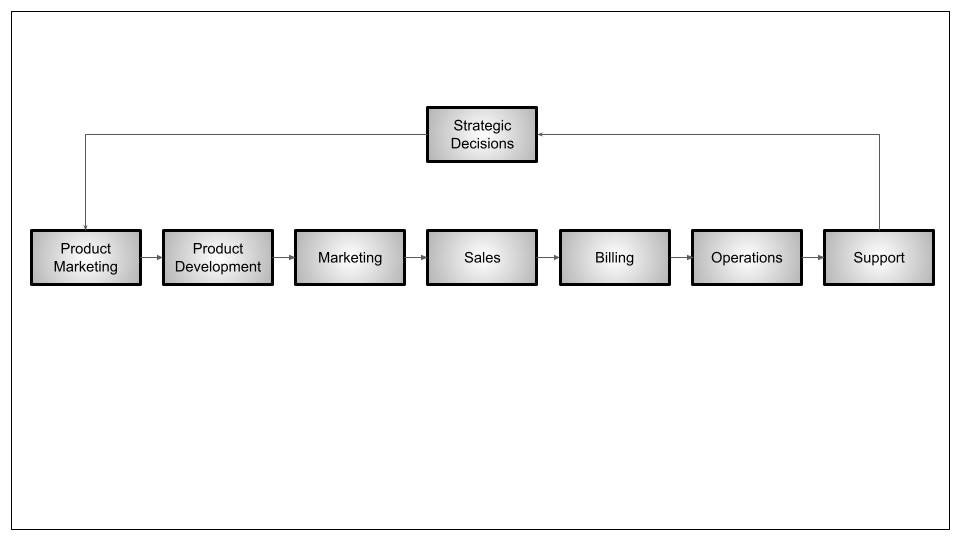
The Enterprise Map shows a generic set of enterprise functions and the simple process flow as shown in the map which represents a business cycle of deciding which products to develop, taking them to market, selling them, delivering them, and then supporting them. It begins with strategic decision making which starts the process eg. what target markets and products, and the cycle ends with a review of information gathered through the overall process leading to further strategic decision making and renew the cycle.
The Enterprise Framework then takes each of the Enterprise Map functions and presents these in terms of capabilities and against each capability there are one or more activities. From a Salesforce perspective these activities can be aligned alongside the various Salesforce Clouds which are most relevant for the performing the activity eg. Marketing Cloud for Engagement Journeys, Einstein Analytics for Reporting and KPIs.
These are presented below for the enterprise functions Marketing through to Support which represents a typical Salesforce scope.
Marketing Framework
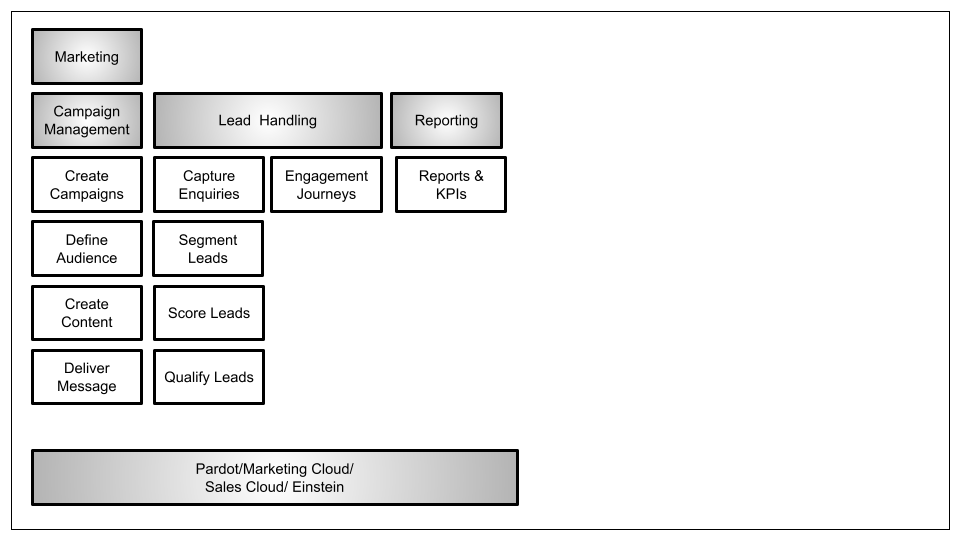
Sales Framework

Billing Framework

Operations Framework

Support Framework
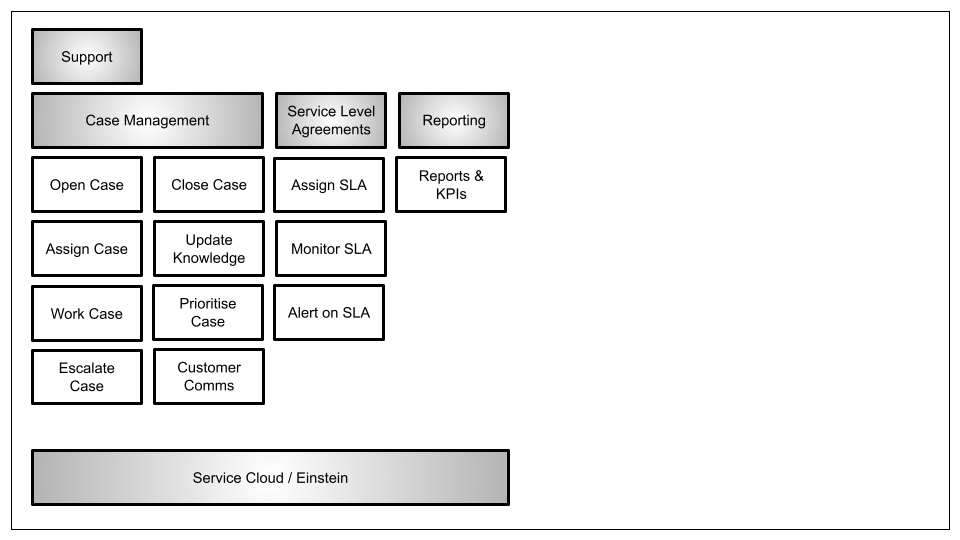
If we put it all together we get the following
Enterprise Framework
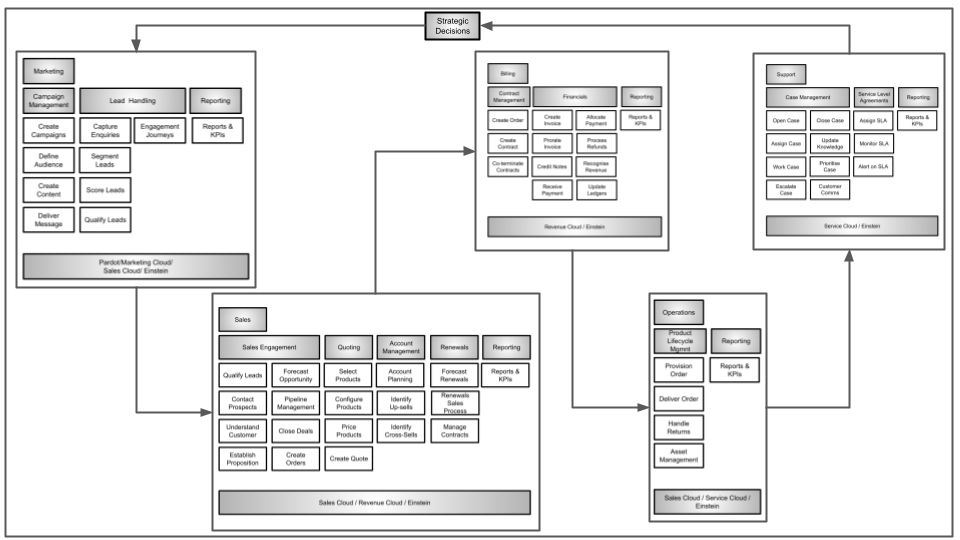
Usage of the Enterprise Framework
Usage of the framework is key to its success
Start with the Enterprise Map and use it to plot priority business issues against the enterprise functions eg initial conversations may highlight the following business pain points
- leads from marketing are poor quality and not qualified so time is wasted when passed to sales.
- sales processes are not being followed well and so pipelines and forecasts are not accurate.
- support is not responding timely to customer enquiries so customer experience is bad.
When plotted on the Enterprise Map we get the following which highlights the required initial scope investigation should focus on sales, marketing and support.

Looking at the frameworks for each of these business functions we can then indicate the principal initial areas of focus eg
- Engagement Journeys, Score and Qualify Leads for marketing
- Understand customer, forecast opportunity and pipeline management for sales
- Assign, Monitor, and Alert SLA for support.

Once a deeper knowledge of these activities are understood the supporting activities on the framework can be investigated and opportunities for efficiencies explored while maintaining the focus on the key business issued to be solved.
The template sheet shown below is an example for a lead to cash process discovery. It shows relevant open questions which can be asked and how the responses can be used to identify current state processes with issues and their impact levels. Initiatives for resolving these issues can be highlighted with expected returns. Also specific Salesforce Appexchange 3rd party apps can be identified and highlighted as a potential solution.
Lead to Cash Analysis Template
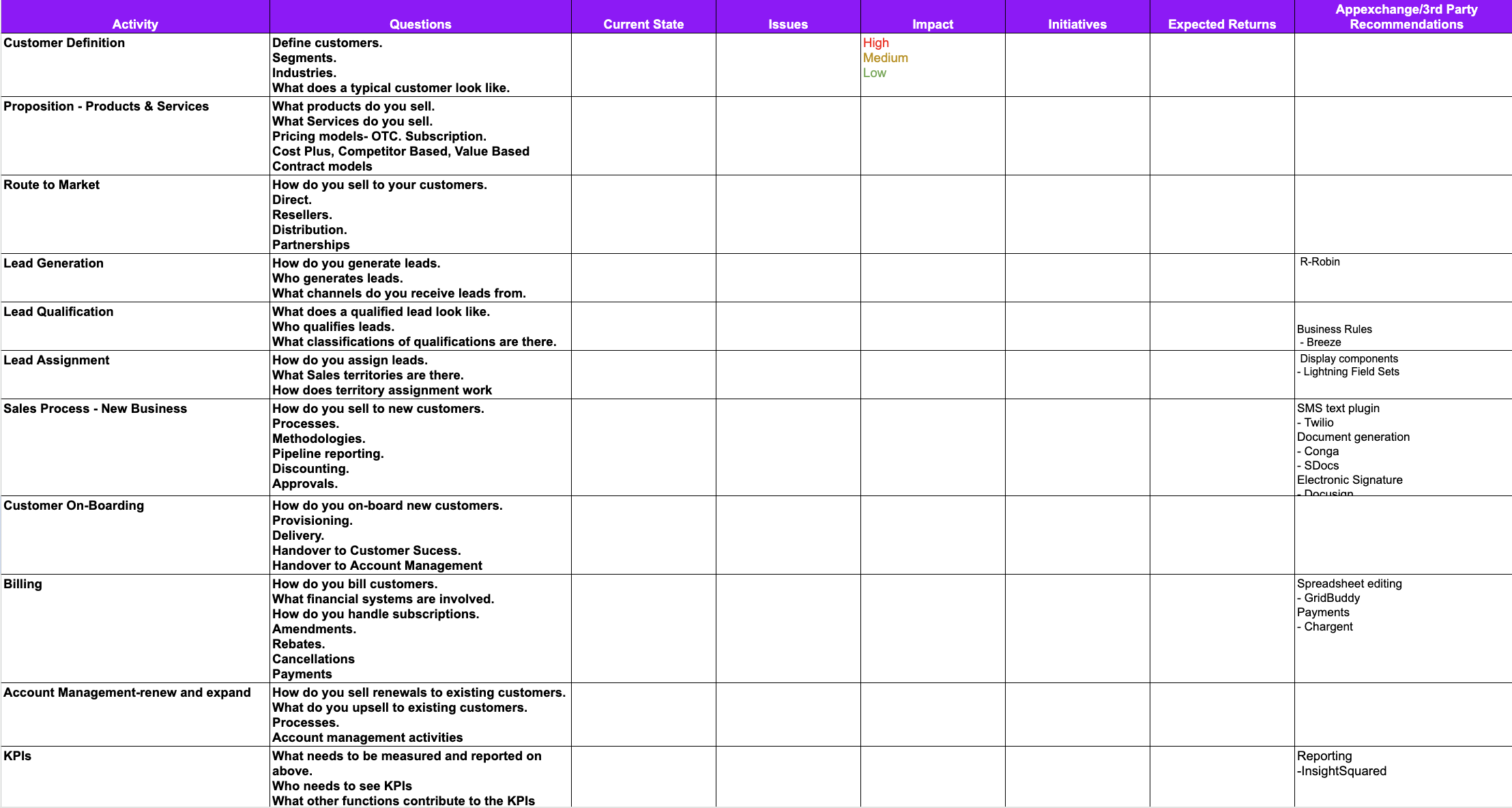
As can be seen the Enterprise Framework is focussed on business functions and facilitates the business conversations before diving into the technology around potential solutions. Once the business landscape has been identified and explored the potential technical solutions can be investigated with clear context around business scope and target benefits.
In summary digital transformation across an enterprise is complex. There are a number of business functions and stakeholders involved with significant challenges to be overcome in order to plan and specify the deliverables required to meet the objectives of an enterprise digital transformation program. Here we suggest and demonstrate the use of an Enterprise Framework which can be the basis for planning such a program.